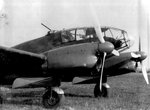How about "plane you wish had gotten into combat quicker or more smoothly".
As much of a 4th FG devotee as I am, I still wonder what the 56th could have done with the P-47M if they hadn't had such long lasting teething issues with it. Outstanding plane, what might they have accomplished if it had gotten into combat smoothly in the winter of 44-45 instead being fequently grounded until the problems were finally ironed out in April?
As much of a 4th FG devotee as I am, I still wonder what the 56th could have done with the P-47M if they hadn't had such long lasting teething issues with it. Outstanding plane, what might they have accomplished if it had gotten into combat smoothly in the winter of 44-45 instead being fequently grounded until the problems were finally ironed out in April?


